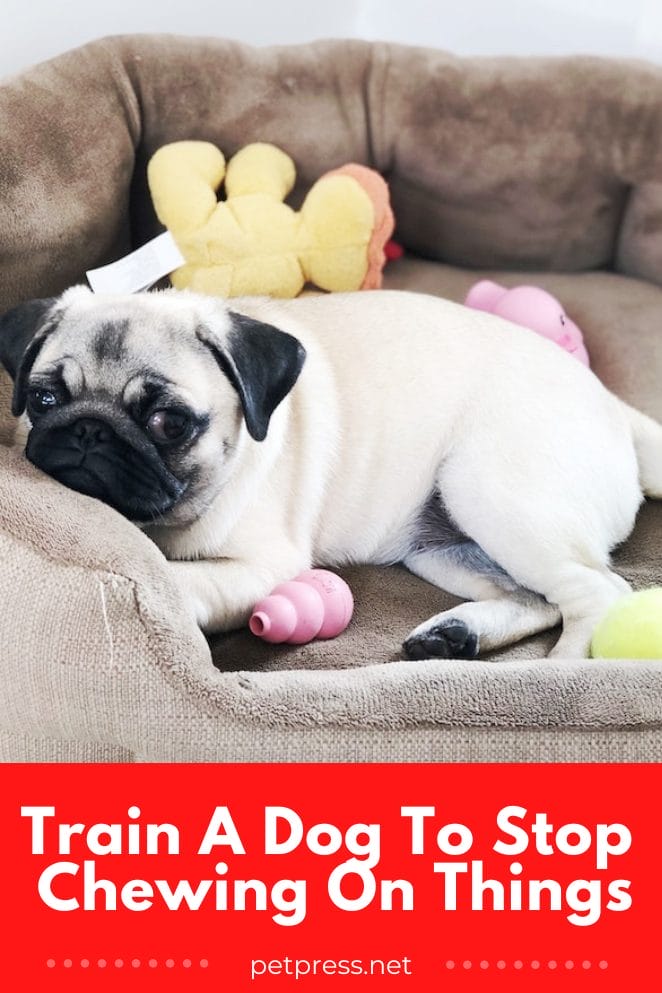
Ah, dogs! How can something so adorable cause so much chaos? Chewing is a very common issue faced by dog owners, especially those with puppies. So how to get a dog to stop chewing on things at home?
With patience and consistency, you can train your pup to put away the chew toys and learn acceptable behavior.
It’s natural for them to chew on things, but it isn’t always ideal if they’re destroying furniture and other belongings in the process.
In this article, we’ll discuss some tips and tricks that will help you get your furry friend under control and make sure all your belongings remain intact!
While it might take some time, it’s worth the effort in order to keep both you and your pup happy.
Why does my dog constantly chew on everything?
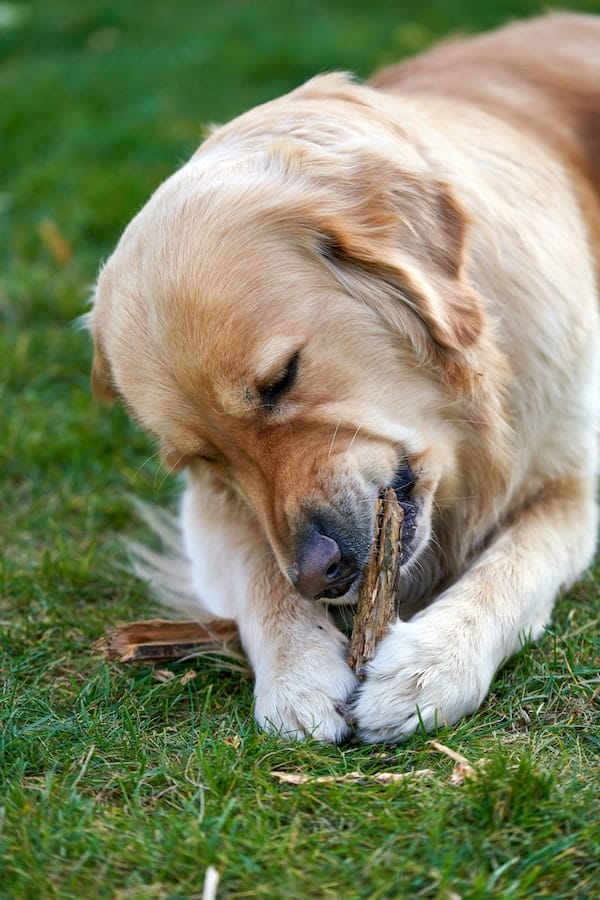
Why does your pup chew on everything such as walls, sticks, etc? It’s enough to drive us, humans, to the brink of insanity… but never fear, there is some good news in this situation.
Destructive chewing in dogs isn’t something they just do to annoy you; it actually serves several important purposes!
Here are five reasons why your canine companion might be (not-so) subtly telling you that it’s time for a chew toy upgrade:
1. Boredom
Dogs need mental and physical stimulation or else their energy could lead them down a destructive path.
Chewing provides an outlet for this pent-up energy, though if left unchecked can result in your sofa cushions becoming their new best friend.
2. Stress and Anxiety
Separation anxiety, fear of loud noises, and other stressful situations can lead to chewing as a coping mechanism.
Providing comforting toys or anti-anxiety aids may help reduce destructive behaviors in these cases.
3. Teething
Puppies are like human babies; when their teeth first come in (around 3-6 months old) they’ll often chew on things to alleviate the discomfort that comes with teething.
Consider giving them appropriate toys for this period of growth to head off any unfortunate incidents!
4. Dental Hygiene
Chewing is an important part of maintaining good dental hygiene for your pup, and it also helps relieve pressure from their gums during the teething phase.
Make sure your pup has plenty of chew toys that are safe and appropriate for their size and breed to help keep those teeth clean!
5. Curiosity
Dogs, much like children, explore the world around them through their mouths. If any new objects catch their eye, they may be inclined to give it a chew (for better or worse).
It’s important to always keep an eye out for potentially hazardous materials and remove them from your pooch’s reach if necessary.
How to get a dog to stop chewing on things
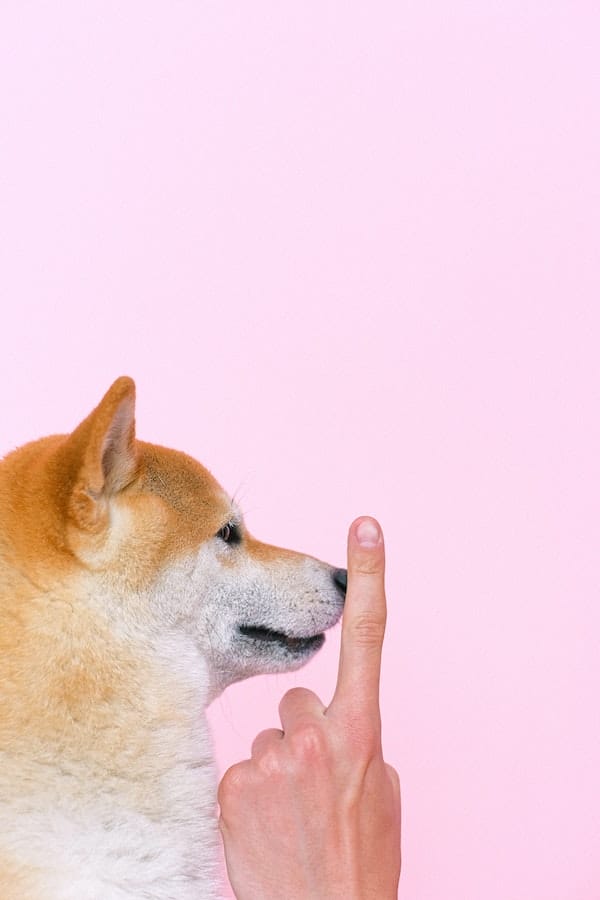
Dogs are certainly capable of turning even the most expensive things into unrecognizable bits of fluff and fibers. But don’t despair!
There are numerous ways to help put a stop to your furry friend’s destructive chewing habits.
Here are 10 handy tips for getting your pup to put down their toys—and leave all other objects alone!
1. Provide plenty of chew toys:
Giving your dog some fun alternatives is definitely one way they can learn what they should and shouldn’t chew on. Consider offering different shapes and textures that will provide lots of stimulation for them.
2. Exercise more often:
A tired pup is a well-behaved pup! Make sure you’re getting them plenty of physical and mental stimulation throughout the day.
3. Make sure they’re fed properly:
A dog who’s not getting enough nutrition may start to look elsewhere for sustenance—which usually means chewing on things they shouldn’t! Feed them good food, in appropriate amounts and at regular times, to help keep their energy levels up.
4. Unplug all electrical cords:
Electrical shocks are no fun! Put away any wires and cables that could be a danger if chewed.
5. Use bitter apple sprays:
They’re completely harmless but can act as an excellent deterrent for dogs who like to chew on things they shouldn’t.
6. Train them properly:
A few basic commands can help keep your pup in check. Teach them ‘leave it’ and ‘drop it’ whenever they start to chew on something they shouldn’t—and always reward good behavior!
7. Get a pet camera:
Pet cameras are a great way to keep an eye on your pup when you’re out of the house. This can help prevent any unwanted chewing incidents from happening in your absence.
8. Distract their attention:
If you notice that your dog is about to start chewing on something inappropriate, try distracting them with a more interesting activity such as fetch or tug-of-war.
9. Use pet repellents:
Invest in some pet repellents that contain natural ingredients like mint or citrus to keep your pup away from the things you don’t want them to chew on.
10. Take away temptations:
If all else fails, simply remove any temptations from their reach and only give them access when you can be there to supervise. This is a surefire way of stopping destructive chewing in its tracks!
At what age do dogs stop chewing everything?
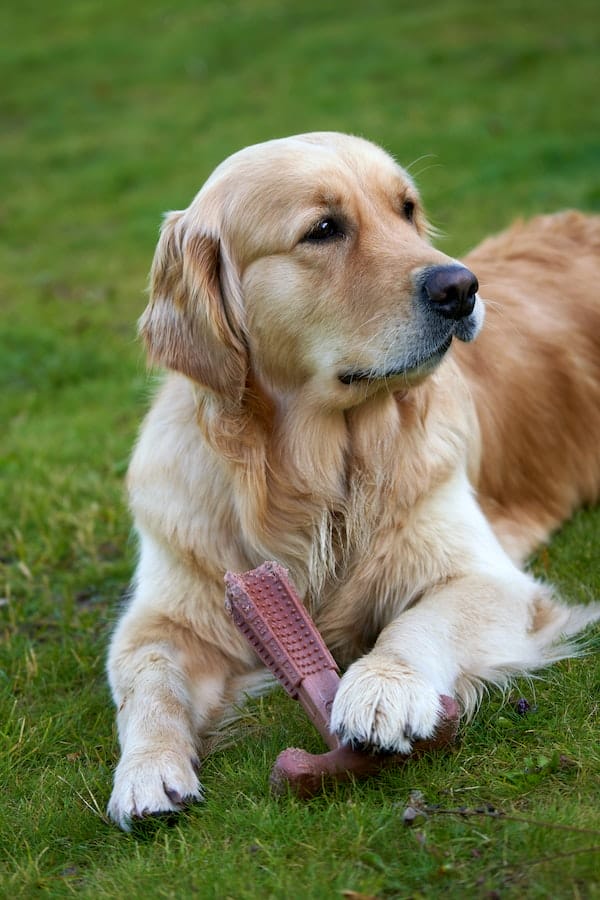
Well, if you ask any dog owner, they may tell you that dogs never stop chewing everything! But in reality, puppies usually start to show signs of stopping around the age of 6 months.
At this point, most pups have become more accustomed to their environment and are better able to understand boundaries.
This means that they know what is off-limits and will make fewer attempts at chewing on objects they’re not supposed to.
Even still, they may occasionally act out by mouthing an object or two – it’s all part of learning right from wrong!
Older dogs usually don’t display as much enthusiasm towards chewing as puppies do; however, some adult canines may still have an affinity for toys and even furniture.
If this is the case, it’s important to provide your dog with plenty of appropriate chew items like bones or safe rubber toys.
Should you punish your dog for chewing?
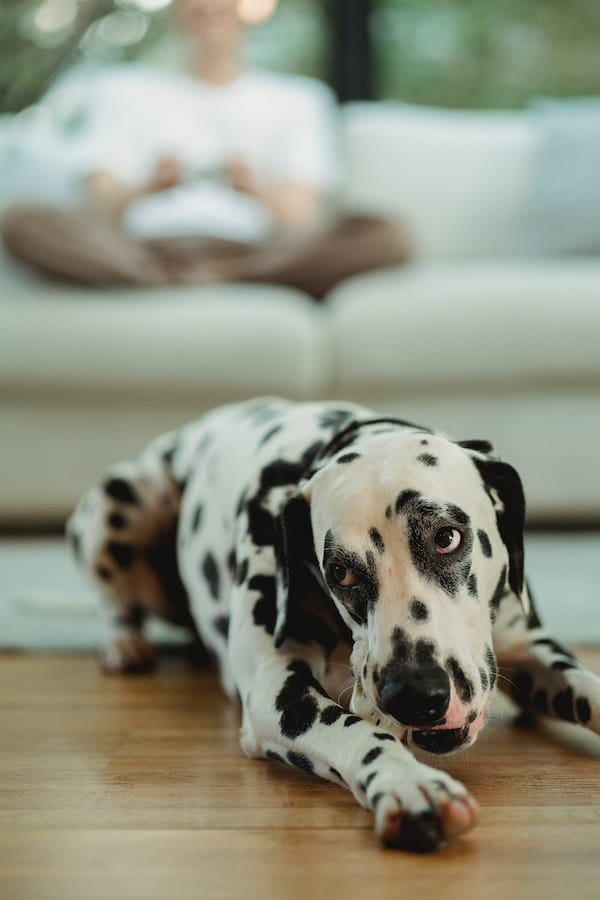
When it comes to punishing your pup for chewing, the short answer is a resounding “No!” Punishing your pooch will only serve to confuse or even scare them.
Unfortunately, this can result in unwanted behaviors like aggression or fear due to a lack of trust in you as an owner.
The better approach is prevention and positive reinforcement.
Final Thoughts
In conclusion, if you’re struggling to stop your pup from chewing on everything in sight, patience is key.
Plenty of exercise and mental stimulation, redirecting behaviors towards appropriate chew toys, and consistently rewarding good behavior are all essential components of teaching a dog not to chew on things.
With consistency and dedication from you as the owner, eventually, your furry friend will learn that chewing on furniture doesn’t lead to any rewards—only time spent with their favorite person does!


GIPHY App Key not set. Please check settings